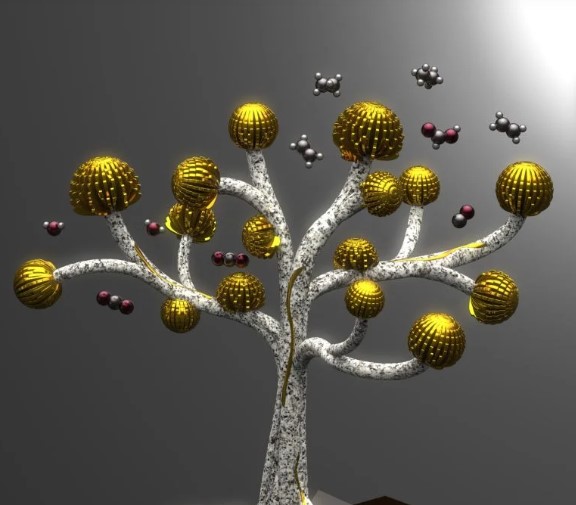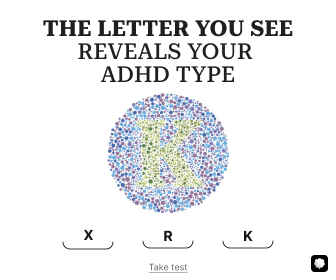Transforming CO2: How an Artificial Leaf Could Change the World

Scientists have developed an artificial leaf that uses sunlight to convert CO? into hydrocarbons, offering a sustainable alternative to fossil fuels.
Did you know? You can comment on this post! Just scroll down
To create clean fuels and vital chemicals that are the foundation of contemporary manufacturing and energy, tiny copper "nano-flowers" have been affixed to an artificial leaf.
Scientists from the University of Cambridge and the University of California, Berkeley have created a workable process that uses just sunlight to create hydrocarbons, which are molecules made up of carbon and hydrogen.
Scientists from the University of Cambridge and the University of California, Berkeley have created a workable process that uses just sunlight to create hydrocarbons, which are molecules made up of carbon and hydrogen.
To transform carbon dioxide into useful chemicals, their gadget combines a copper nanoflower catalyst with a light-absorbing "leaf" composed of perovskite, a material used in high-efficiency solar cells. The copper flowers enable the synthesis of more complex hydrocarbons with two carbon atoms, such ethylene and ethane—essential building blocks for liquid fuels, chemicals, and plastics—in contrast to the majority of metal catalysts, which can only convert CO? into single-carbon molecules.
A Cleaner Alternative to Fossil Fuels
The Cambridge-Berkeley team's process produces clean chemicals and fuels from CO2, water, and glycerol, a common organic component, without releasing any extra carbon emissions. Currently, almost all hydrocarbons come from fossil fuels. The journal Nature Catalysis publishes the findings.
Drawing inspiration from photosynthesis—the process by which plants transform sunlight into food—the study expands on the team's previous work on artificial leaves. "We wanted to produce more complex hydrocarbons and go beyond basic carbon dioxide reduction, but that requires significantly more energy," said lead author Dr. Virgil Andrei of Cambridge's Yusuf Hamied Department of Chemistry.
Drawing inspiration from photosynthesis—the process by which plants transform sunlight into food—the study expands on the team's previous work on artificial leaves. "We wanted to produce more complex hydrocarbons and go beyond basic carbon dioxide reduction, but that requires significantly more energy," said lead author Dr. Virgil Andrei of Cambridge's Yusuf Hamied Department of Chemistry.
As part of the Winton Cambridge-Kavli ENSI Exchange program, Andrei, a Research Fellow at St John's College in Cambridge, completed the work in Professor Peidong Yang's group at the University of California, Berkeley.

Increased Effectiveness using Nanowire Electrode Technology
The researchers was able to create more complicated hydrocarbons by combining the copper nanoflower catalyst with a perovskite light absorber. The scientists used silicon nanowire electrodes that can oxidize glycerol in place of water to increase efficiency and get around the energy constraints of water splitting. Compared to previous methods for separating carbon dioxide and water, this new platform is 200 times more efficient at producing hydrocarbons.
In addition to improving CO? reduction efficacy, the reaction yields valuable compounds such formate, lactate, and glycerate that are used in chemical synthesis, medicines, and cosmetics.
Optimizing the Process for Greater Efficiency
"Glycerol is usually regarded as waste, but in this case, it is essential for increasing the rate of reaction," Andrei stated. This shows that our platform is not limited to waste conversion and can be used for a variety of chemical processes. The process can be made more selective by carefully regulating the catalyst's surface area, which will affect the products it produces.
Despite the fact that the current CO?-to-hydrocarbon selectivity is only about 10%, the researchers are hopeful that catalyst design may improve efficiency. By extending its platform to even more intricate organic interactions, the team hopes to spur innovation in environmentally friendly chemical manufacturing. With further advancements, this research may hasten the shift to a carbon-neutral, circular economy.
"This project is a great illustration of how international research collaborations can result in significant scientific breakthroughs," Andrei stated. "By integrating knowledge from Berkeley and Cambridge, we have created a system that could revolutionize the sustainable production of valuable chemicals and fuels."
"This project is a great illustration of how international research collaborations can result in significant scientific breakthroughs," Andrei stated. "By integrating knowledge from Berkeley and Cambridge, we have created a system that could revolutionize the sustainable production of valuable chemicals and fuels."
Citation: Virgil Andrei, Inwhan Roh, Jia-An Lin, Joshua Lee, Yu Shan, Chung-Kuan Lin, Steve Shelton, Erwin Reisner, and Peidong Yang, "Perovskite-driven solar C2 hydrocarbon synthesis from CO2," Nature Catalysis, February 3, 2025.
Article Posted 3 Months ago. You can post your own articles and it will be published for free.
No Registration is required! But we review before publishing! Click here to get started

















